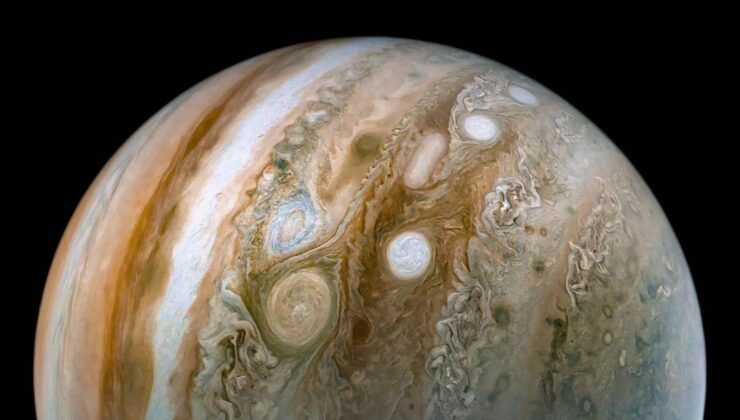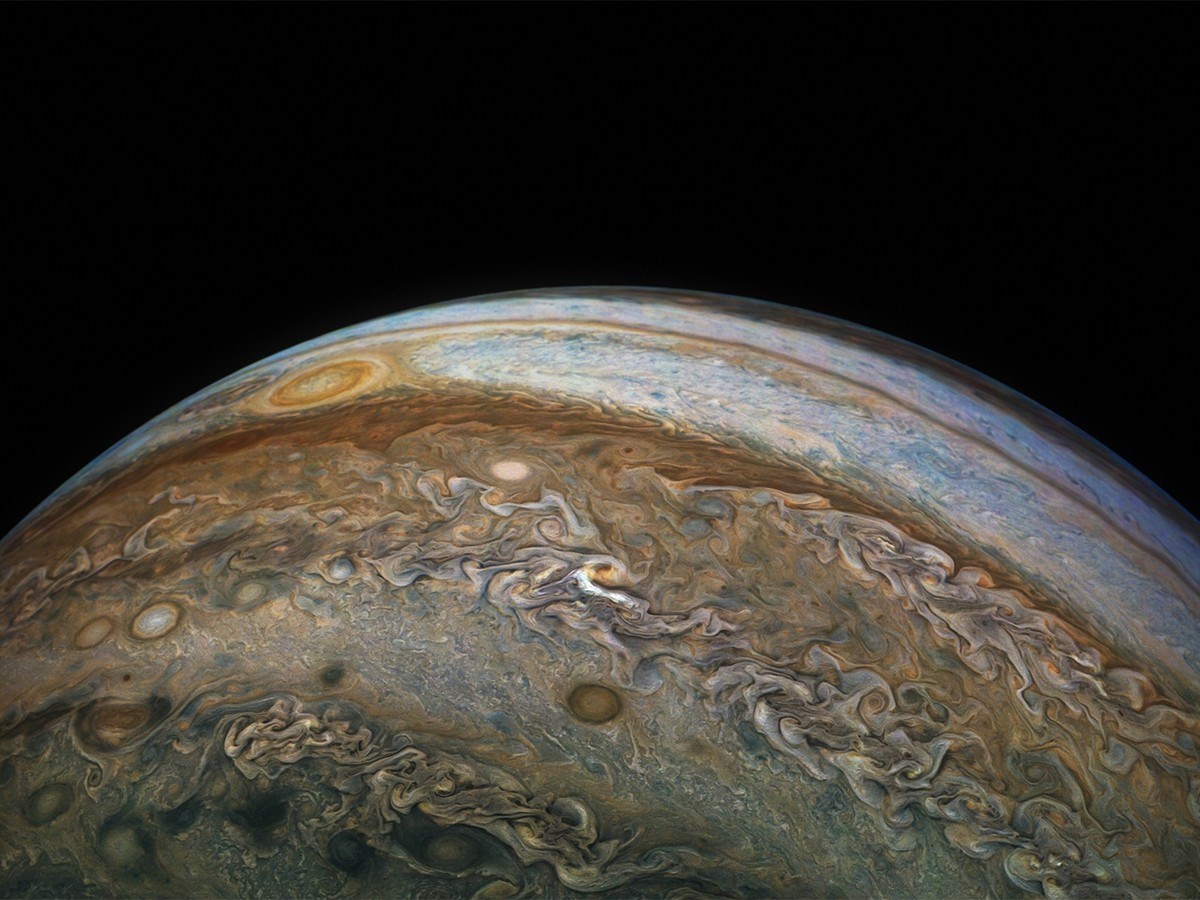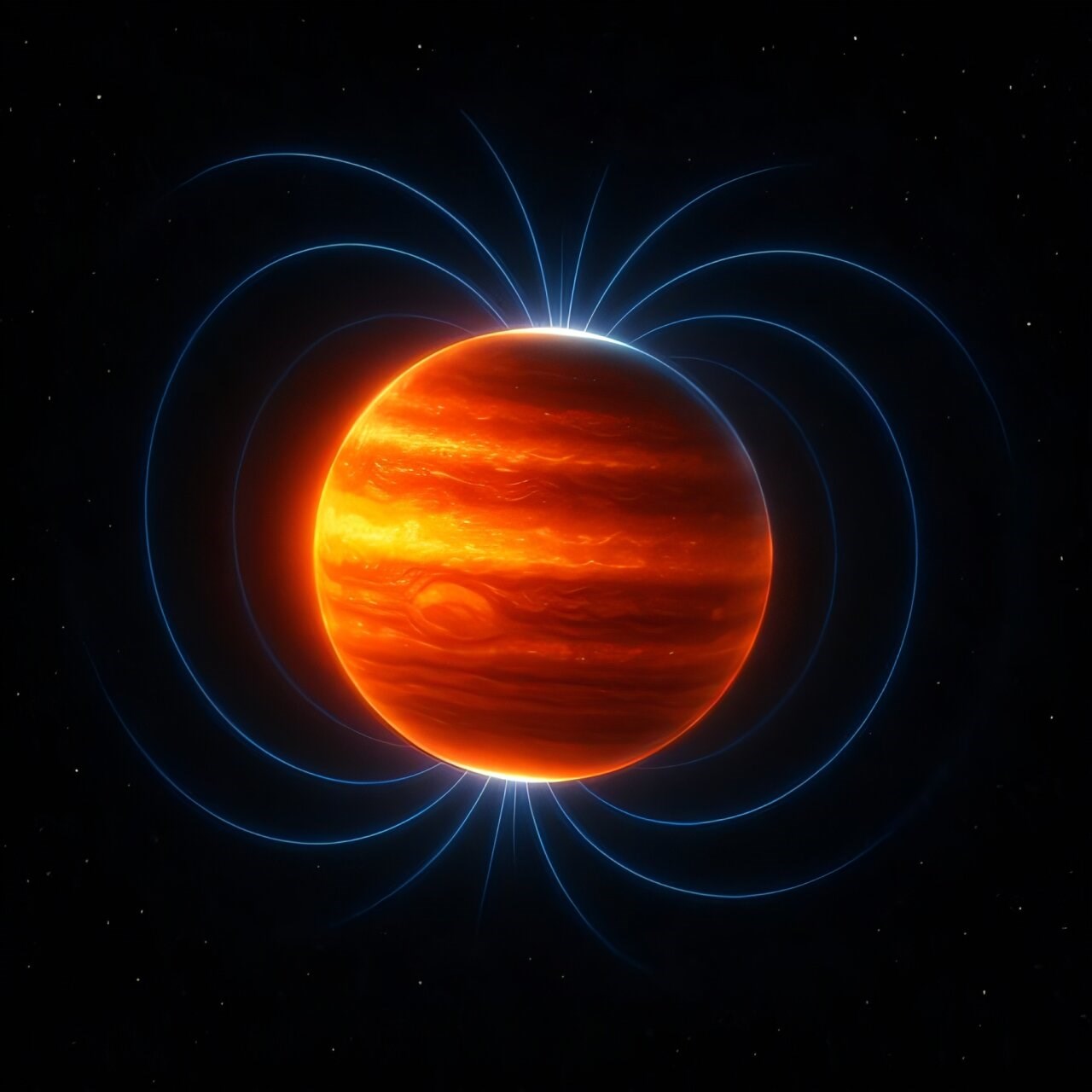

A groundbreaking investigation into Jupiter’s early history has uncovered that this colossal planet was once significantly larger and more influential than it currently is. In its formative years, a mere 3.8 million years following the birth of the Solar System, Jupiter boasted a size nearly twice its current dimensions and possessed a formidable magnetic field that was 50 times more intense than today, as revealed in a recent study published in Nature Astronomy.

Led by the insightful Prof. Konstantin Batygin from Caltech and the astute Prof. Fred C. Adams of the University of Michigan, this research delves into Jupiter’s 4.5 billion-year journey. The findings underscore Jupiter’s crucial role in orchestrating the architectural design of the Solar System. By meticulously examining the subtle inclinations in the orbits of Jupiter’s inner moons, Amalthea and Thebe, scientists deduced the primeval physical attributes of the planet. These slight variances indicate that young Jupiter had a volume equating to approximately 2,000 Earths and a magnetic field 50 times stronger than its present state.

One remarkable aspect of this study is its reliance on independently measurable constraints, such as satellite orbital dynamics and angular momentum conservation, rather than the speculative assumptions commonly used in traditional planetary formation models. This innovative approach yields more precise and assumption-free results. Through this analysis, researchers have captured an unambiguous snapshot of Jupiter’s physical state during the pivotal moment when the nebular cloud dissipated, marking the end of planet-forming materials in the Solar System. This transition is deemed the critical juncture where the planets’ ultimate structures were solidified.
The findings provide invaluable insights into existing planet formation theories, which postulate that Jupiter and other gas giants emerged through a core accretion process. In this model, a nucleus of rock and ice swiftly accrues gas, evolving into a massive planet. The researchers aim to extend their understanding beyond Jupiter to unravel the broader narrative of how our Solar System was sculpted.
SİGORTA
2 gün önceSİGORTA
3 gün önceSİGORTA
3 gün önceSİGORTA
3 gün önceSİGORTA
4 gün önceSİGORTA
6 gün önceSİGORTA
6 gün önceSİGORTA
9 gün önceSİGORTA
9 gün önceSİGORTA
10 gün önce 1
DJI Mini 5: A Leap Forward in Drone Technology
20094 kez okundu
1
DJI Mini 5: A Leap Forward in Drone Technology
20094 kez okundu
 2
xAI’s Grok Chatbot Introduces Memory Feature to Rival ChatGPT and Google Gemini
14106 kez okundu
2
xAI’s Grok Chatbot Introduces Memory Feature to Rival ChatGPT and Google Gemini
14106 kez okundu
 3
7 Essential Foods for Optimal Brain Health
12975 kez okundu
3
7 Essential Foods for Optimal Brain Health
12975 kez okundu
 4
Elon Musk’s Father: “Admiring Putin is Only Natural”
12821 kez okundu
4
Elon Musk’s Father: “Admiring Putin is Only Natural”
12821 kez okundu
 5
Minnesota’s Proposed Lifeline Auto Insurance Program
10693 kez okundu
5
Minnesota’s Proposed Lifeline Auto Insurance Program
10693 kez okundu
Sigorta Güncel Sigorta Şikayet Güvence Haber Hasar Onarım Insurance News Ajans Sigorta Sigorta Kampanya Sigorta Ajansı Sigorta Sondakika Insurance News